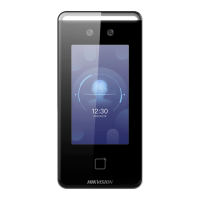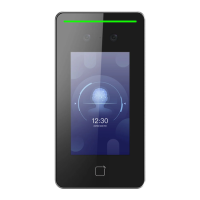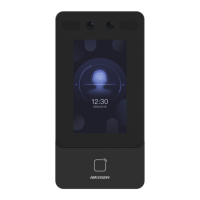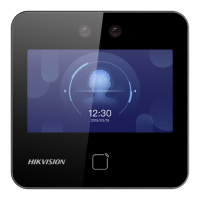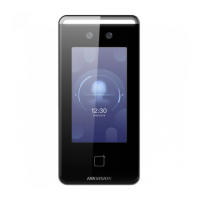
Do you have a question about the HIKVISION DS-K1T341C Series and is the answer not in the manual?
| Model | DS-K1T341C Series |
|---|---|
| Category | Touch terminals |
| Resolution | 480 × 272 |
| Face Recognition Distance | 0.3 m to 1.5 m |
| Display | LCD touch screen |
| Camera | 2MP wide-angle lens |
| Communication | Wi-Fi |
| Access Control | Supported |
| Face Recognition Accuracy | > 99% |
| Face Recognition Duration | < 0.2 s |
| Face Capacity | 300 |
| Card Capacity | 3, 000 |
| Event Capacity | 100, 000 |
| Input Interface | Touch screen, card reader |
| Power Supply | 12 VDC/1 A |
| Operating Temperature | -10°C to 55°C |
| Operating Humidity | 10% to 90% (no condensation) |
| Screen Size | 4.3-inch |
| Screen Type | Touch screen |
| WDR | Supported |
Provides a general introduction to the face recognition terminal.
Lists the key features and capabilities of the device.
Details the optimal conditions for installing the device.
Step-by-step guide for mounting the device with a gang box.
Step-by-step guide for mounting the device without a gang box.
Explains the function of each terminal on the device.
Illustrates wiring connections for standard peripherals.
Shows wiring for connecting to a secure door control unit.
Describes the process of activating the device directly.
Explains device activation using a web browser.
Outlines activation steps using the SADP tool.
Guides on selecting the system language for the device.
Configures network settings like Wi-Fi and wired connections.
Process for adding an administrator for device management.
Steps for logging into the device interface.
Covers adding, editing, and managing user data.
Configures face recognition parameters for performance.
Configures permissions, NFC, M1 card, and door settings.
How to log in to the device using a web browser.
Managing person information through the web interface.
Overview of the client software configuration process.
Managing connected devices through the client software.
Managing person information within the client software.
Defining access groups and assigning permissions.
Configuring advanced access control features.
Viewing and managing device events and notifications.






